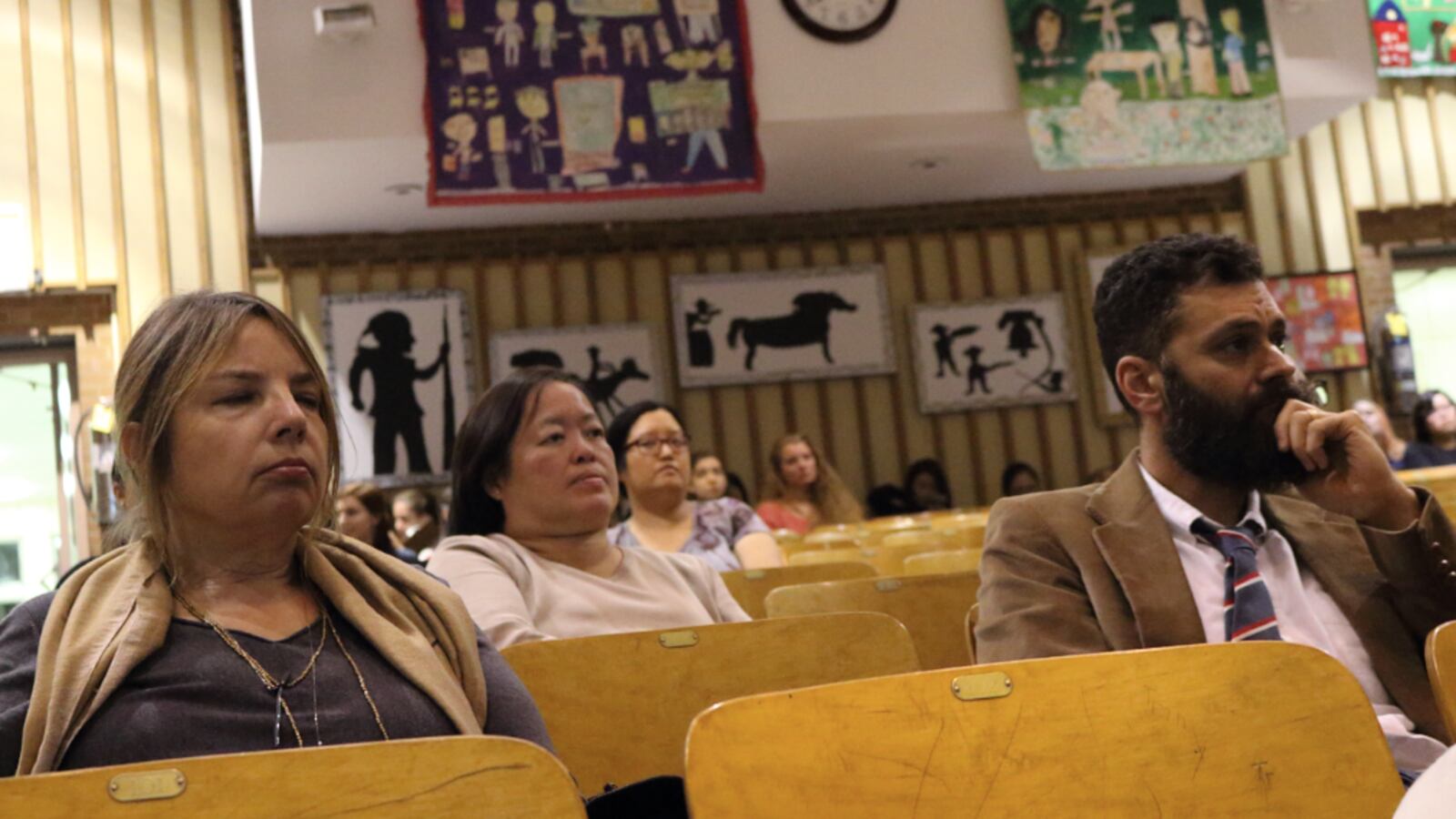After a long and public battle over how to integrate schools on the Lower East Side, the New York City education department has finally won over some critical parent advocates — a crucial step as officials move forward with the de Blasio administration’s first district-wide diversity plan.
The plan creates a new admissions process for students entering pre-kindergarten and kindergarten in the small, segregated district in Lower Manhattan with the goal of getting each school to enroll roughly equal percentages of needy students. The changes will take effect this fall as families apply to schools for the following year.
Last month, when the city first announced its proposal for District 1, which also includes the East Village, the local Community Education Council accused officials of not acting boldly enough and disregarding the community’s vision for what an integration plan should include.
Since then, the department appears to have eased some of their concerns. Most notably, it added students with disabilities to the list of student groups that each school must admit in proportions roughly equal to the district average.
As department officials held public meetings in each of the district’s roughly two-dozen schools over the past month to sell the plan to parents and get feedback, they also were more responsive to members of the education council, said Naomi Peña, the council president who had been one of the department’s most outspoken critics.
“There has been a major shift in the way the DOE has compromised with the community,” she said, adding that the council is now generally supportive of city’s plan. “I think they understand if you want to be successful you have to work with parent leaders.”
Whereas requests for information had previously languished without response, she said officials recently worked through the weekend to run enrollment simulations based on questions from parents. She also said department officials assured her that they will closely monitor the plan — and that they have agreed to make changes if the new system fails to show results.
“This is like when you’re in the last round of boxing,” she said. “However we get to a diverse community is what I’m looking for.”
District 1 elementary schools do not have zones that determine enrollment. Instead, families apply to any schools they choose. While overall the district enrolls a diverse mix of students, many schools do not reflect that. For example, the poverty rate at East Village Community School is just 22 percent — a fraction of the district average of about 70 percent. Meanwhile, virtually all of the students at P.S. 15 Roberto Clemente are poor.
Under the new system, students who are learning English, live in temporary housing, or qualify for free and reduced-price lunch will get first dibs on offers to about two-thirds of the seats in every school — a percentage meant to mirror the share of those students across the entire district. More privileged students who don’t fall into any of those categories will be given preference for a third of seats in each school.
Based on feedback from the public meetings, the city said Thursday that it will also consider whether a student has a disability when making enrollment offers as a way of ensuring that those students are evenly spread across the district.
“We know that all students benefit from diverse and inclusive classrooms, and District 1 is taking an important step forward with their districtwide diversity plan,” schools Chancellor Carmen Fariña said in a statement.
In another change, the city is urging — but not requiring — families to list five school choices on their applications. Families who do so will have a better chance of getting one of their choices. The idea is to encourage parents to consider a wider variety of schools so that parents of the same race and class don’t stick to the same schools.
The change comes after some wealthier parents voiced concerns that needy students from outside the district could get priority for seats over their children. Last year, about 47 percent of applicants to District 1 schools lived in other districts, according to the department.
“We moved here in part because of the quality of the schools in District 1 and the diversity,” David Hung, a parent whose son is entering pre-K next year, said at a recent community meeting that was held before the department’s final plan was announced. “So it’s both somewhat troubling and ironic that as a result of this policy — which I’m very supportive of — that we may in fact not be able to have our kids attend District 1.”
City and parent leaders hope that a new “Family Resource Center,” which opened this month and will provide parents with information about all the district’s schools as they fill out their applications, will expand the range of schools that parents consider.
The new system comes after two years of work by parents, district, and school leaders who landed a state grant to pursue integration strategies in the district — and follows a series of delays and false starts. Advocates had hoped to make these enrollment changes last fall.
Advocates say they hope the process there will serve as an example for other districts, as support for integration strategies grows across the city.
“This is a great way to show how a true community plan can be led, and fingers crossed can be a model,” Peña said.

